The B7 guitar chord is one of the first chords I ever learned that felt like I was twisting my fingers in knots. However, once I mastered it, and it's awesome bluesy sound, I have used it time and time again to give a chord progression that sweet little something extra.
B7 is a bit more of an advanced chord than the A7 or Cm7 that we've discussed before. It takes a little more dexterity and finger flexibility to form it correctly without unintentionally muting other strings.
But, by the end of this lesson and, with a little practice, you will be playing it with no problems at all. We'll also learn how to build the chord, various positions in which it can be played, as well as using it in chord progressions.
Let's get to today's lesson. How about it?
How To Play The B7 Chord
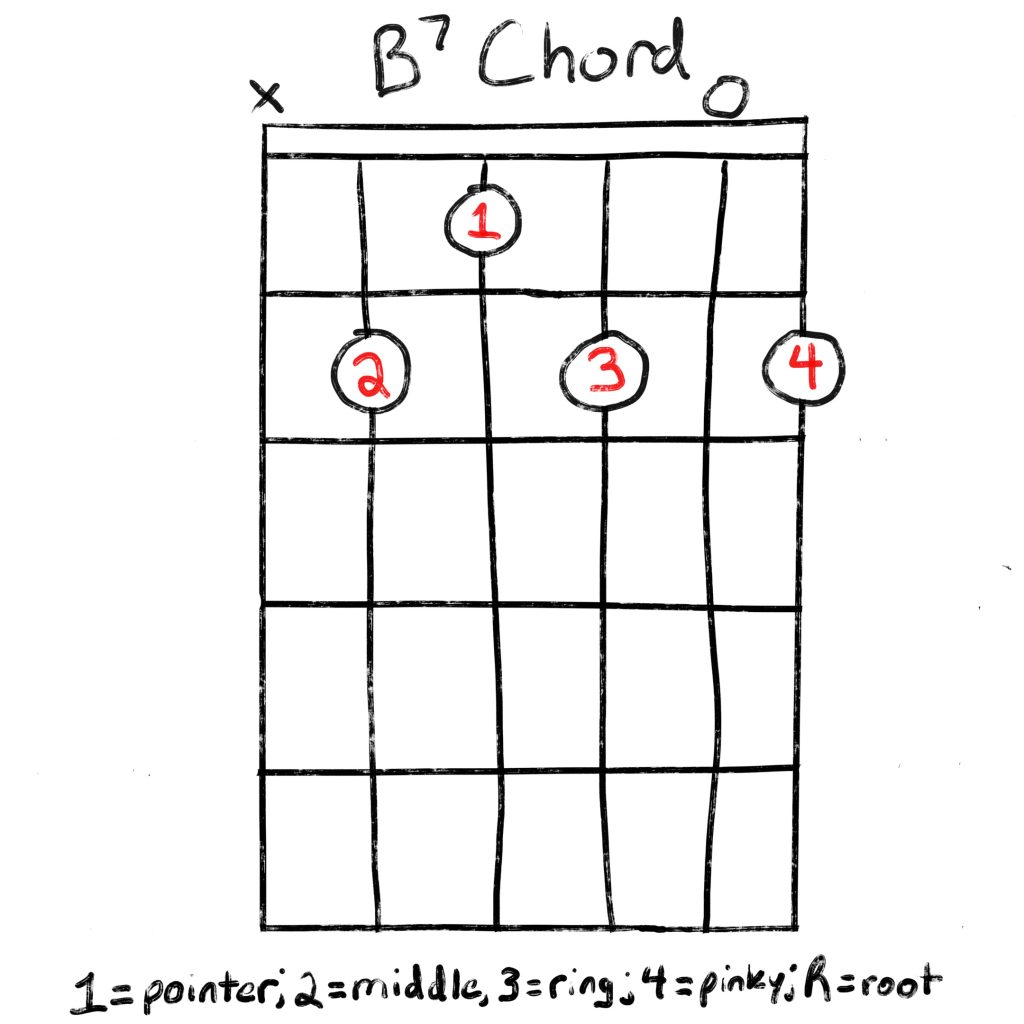
This is my personal favorite version of the chord. It's the first version I learned that made me feel like a "real" guitarist. To play it you put your:
- index finger (1) fretting the D# note of the D string on the 1st fret
- middle finger (2) on the B note of the A string on the 2nd fret
- ring finger (3) on the A note on the G string at the 2nd fret
- pinky finger (4) on the F# note on the high e string at the 2nd fret
- mute the low E string
Variations Of The Chord
That's not the only way to play B7, though. There are plenty of other ways to play it, as well.
Another variation is on the 2nd fret:
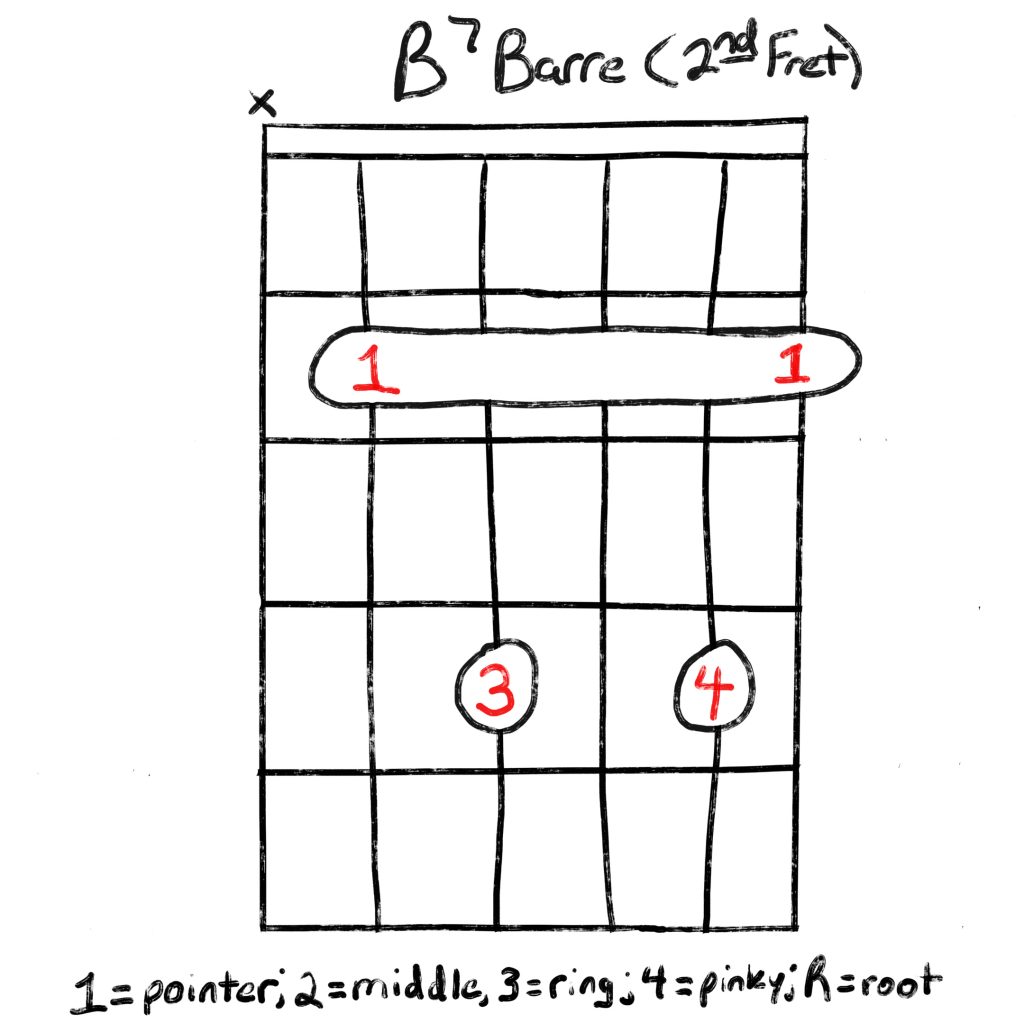
- index finger (1) barred across the A, D, G, B, and e strings at the 2nd fret
- ring finger (3) on the F# note on the D string at the 4th fret
- pinky finger (4) on the D# note on the B string at the 4th fret
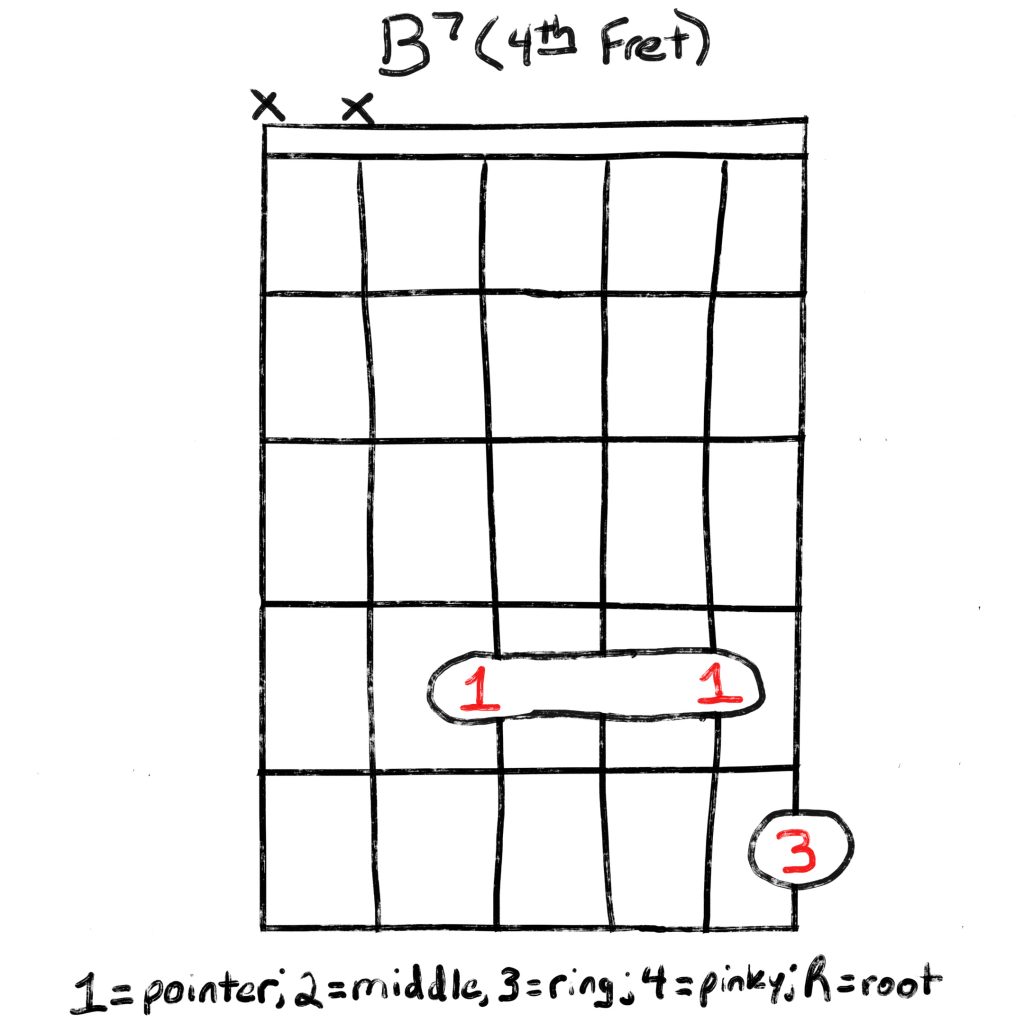
In this diagram, you can play B7 while barring on the 4th fret. Play this version is with your:
- index finger (1) barred across the D, G, and B strings at the 4th fret
- ring finger (3) fretting the A note on the high e string at the 5th fret
Play B7 at various points along the fretboard using barre chords. Here is an example:
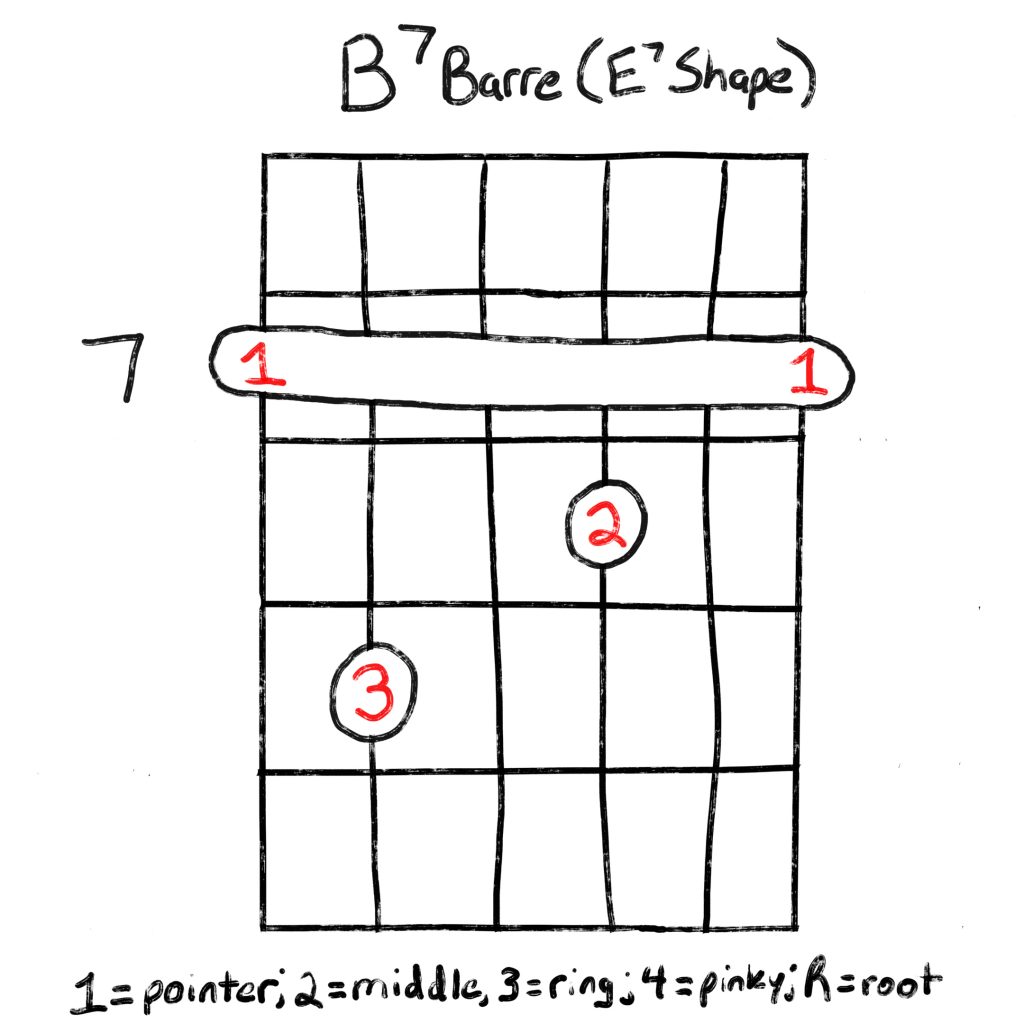
This version uses the Em7 shape with a barre on the 7th fret. You just place your:
- index finger (1) barred across the six strings on the 7th fret
- middle finger (2) on the D# note of the G string on the 8th fret
- ring finger (3) on the F# note on the A string at the 9th fret
The Theory Behind It
Building your chord library is a great way to learn to play guitar. However, if you know how to build your own chords, you can grow that library even faster.
To build a B7 chord you first need to know how to build a B major chord. To do that you need to look at the major scale and build what is called a major triad; the I, III, and V notes played together.
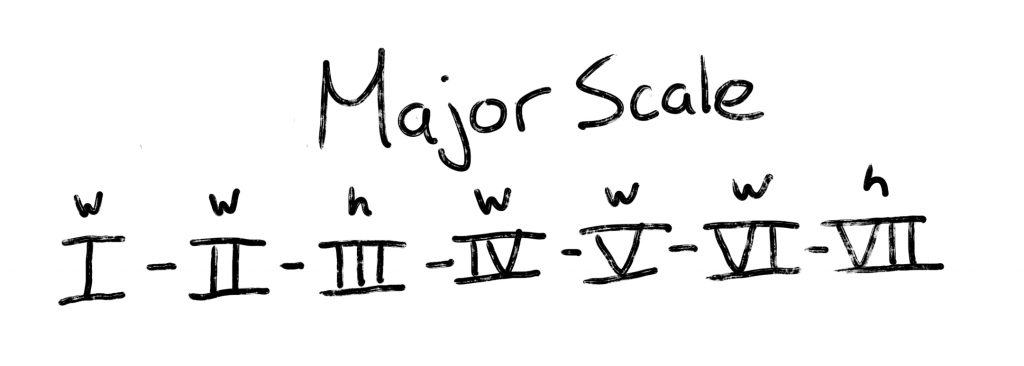
To build a B major chord you take the I, III, and V of the B major scale. Those notes are:
- B (I)
- D# (III)
- F (V)
The B major scale looks like this:

To build a B7 you need to add a bVII, or flat 7th, note to the formula. Which means that a B7 guitar chord formula is:
- B (I)
- D# (III)
- F (V)
- A (bVIII)
Complementary Chords
Now that you can build your own chords you should know how to build your own chord progressions to go along with them.
Since we used the B major scale to build our chords, we will use the same scale to build our chord progression. In the diagram below you can see the formula a Major Chord Scale progression follows.

The B major chord scale looks like this:
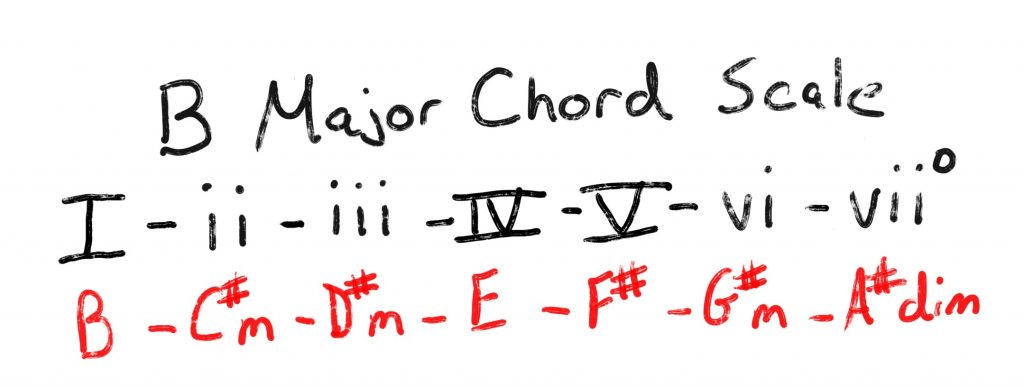
The chords available in the B major chord scale are:
- B (I)
- C#m (ii)
- D#m (iii)
- E (IV)
- F# (V)
- G#m (vi)
- A#dim (vii°)
Note: when a scale degree is lower case (example "iv") that means it is a minor chord.
To make a chord progression you just pull chords from this selection. We went with I7-V7-I7-IV7 or B7-F#7-B7-E7.
This is how you play that progression:
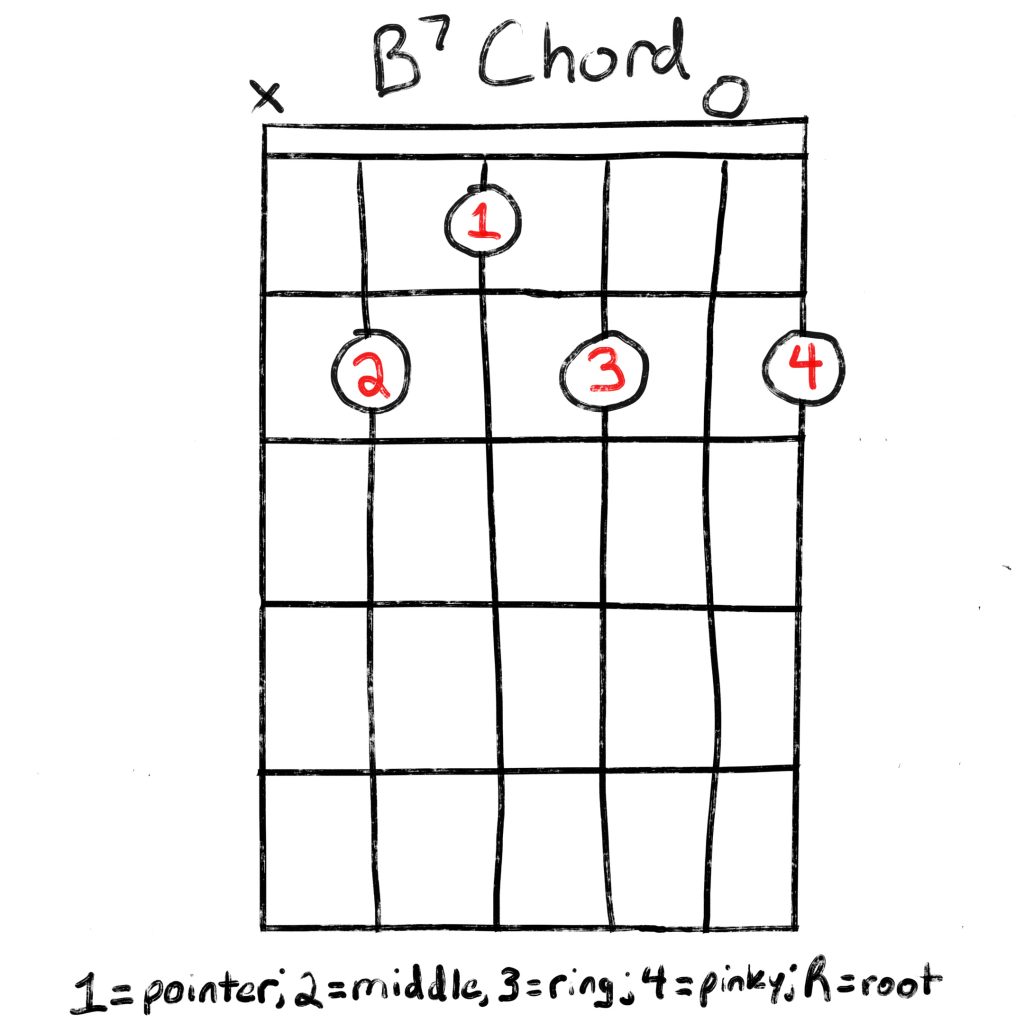
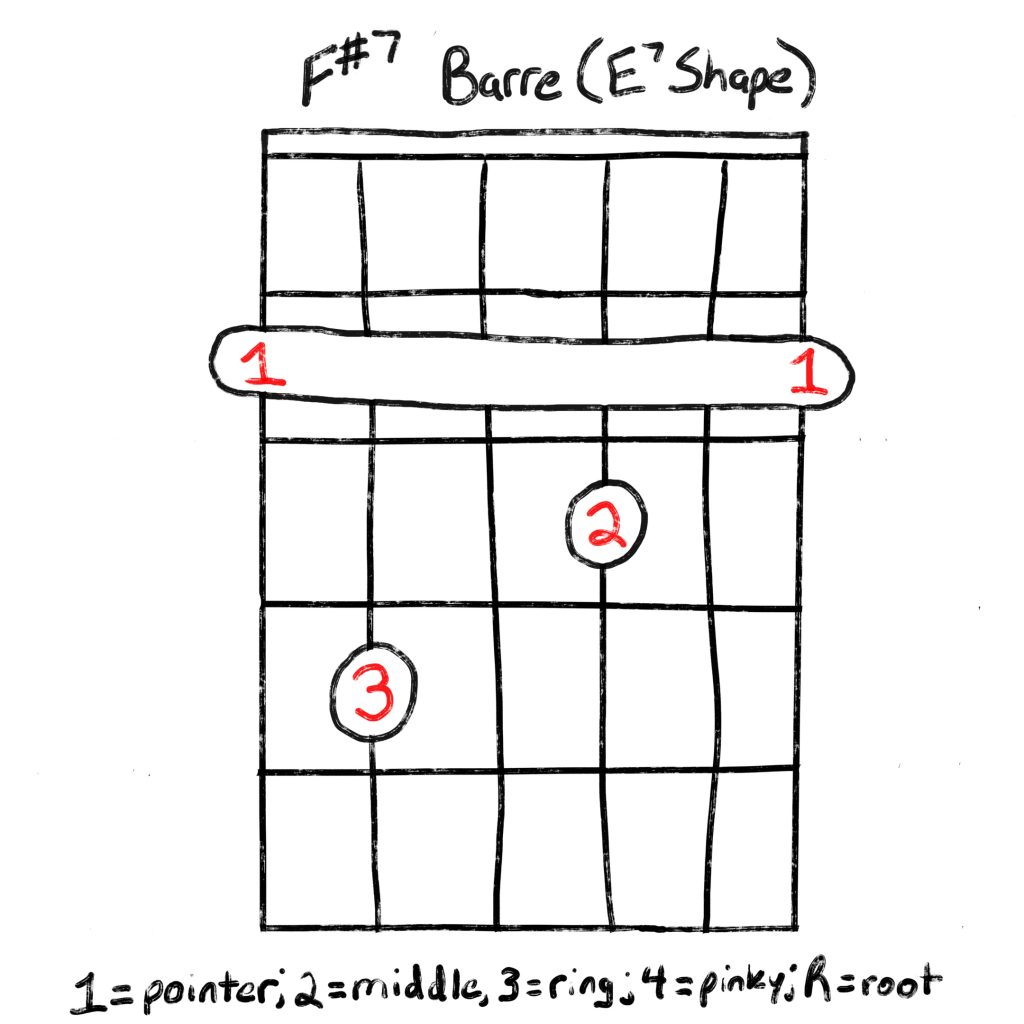
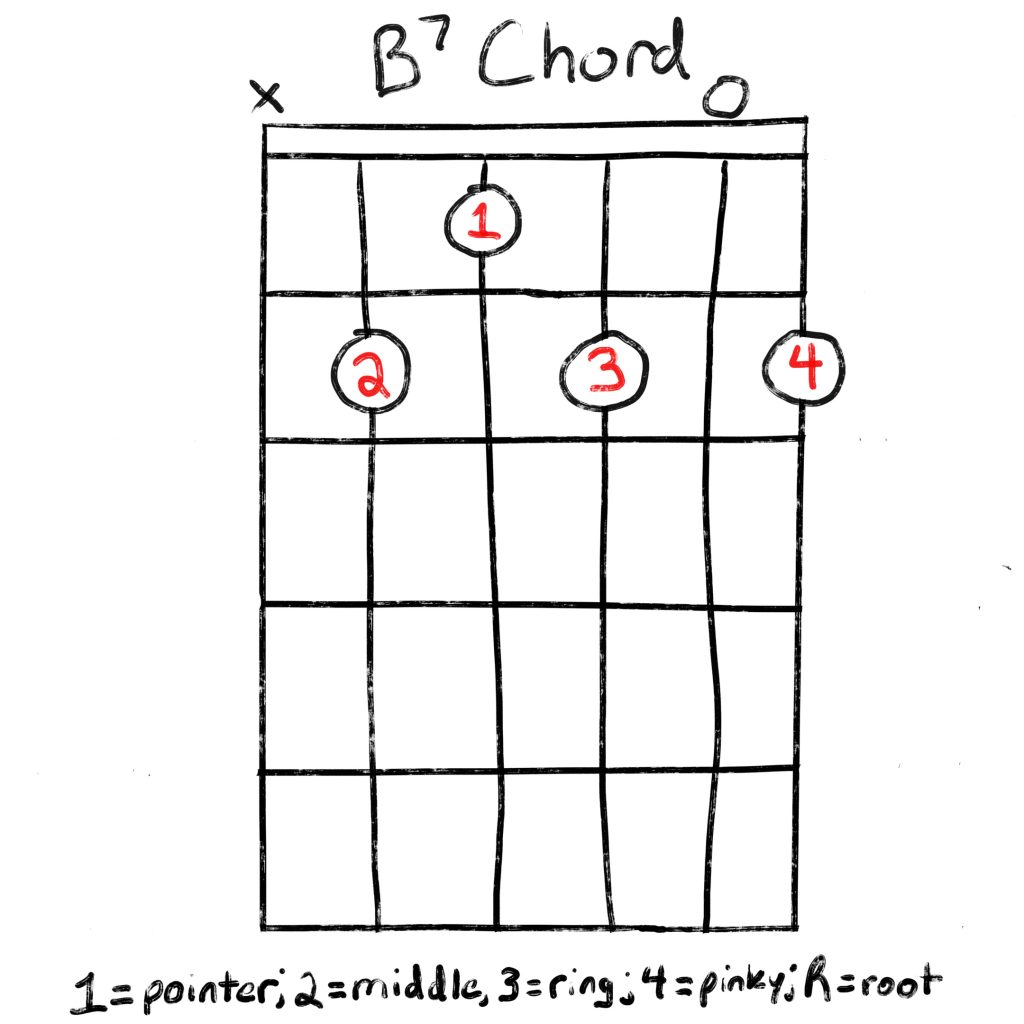
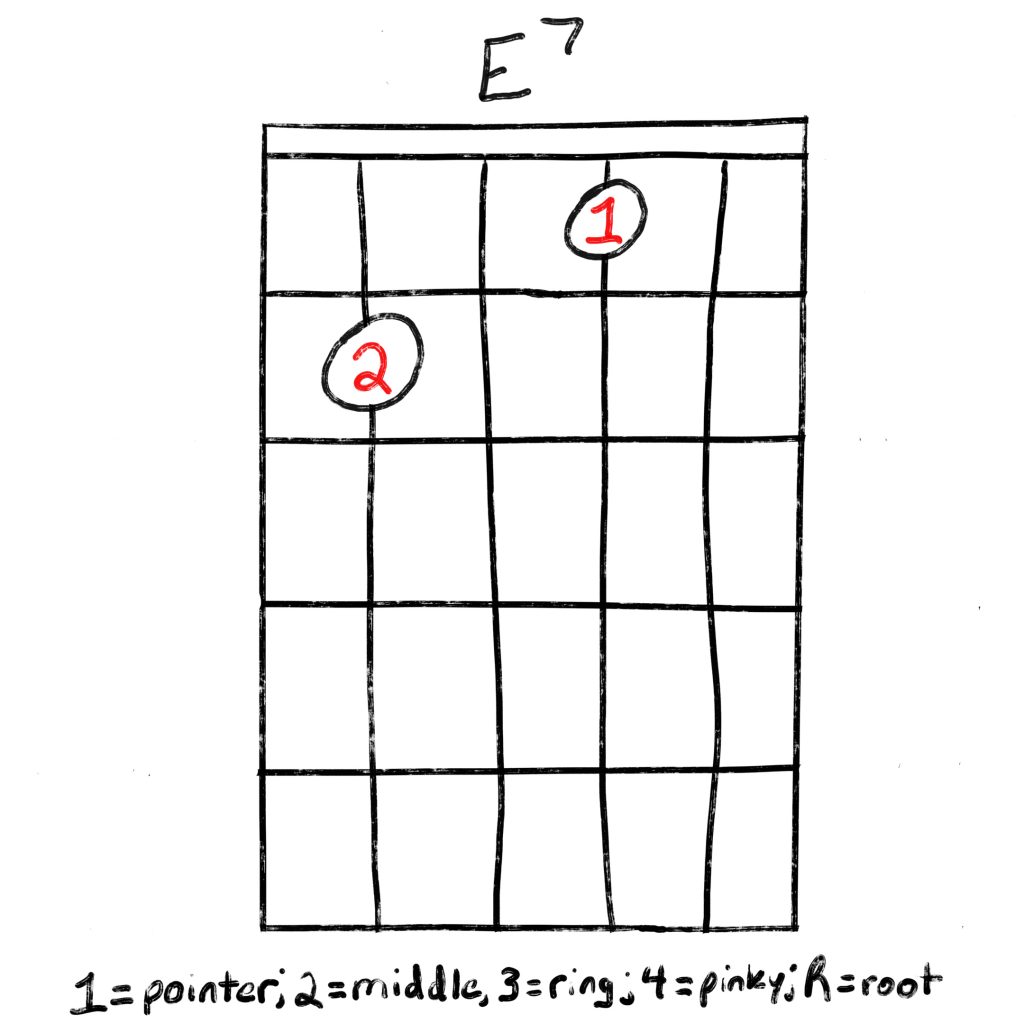
A Couple B7 Chord Variations
You can make the B7 a little more fun by playing around with a few variations. The first we'll start with is a sus4. To make a suspended 4 chord you replace the III in the formula with a IV.
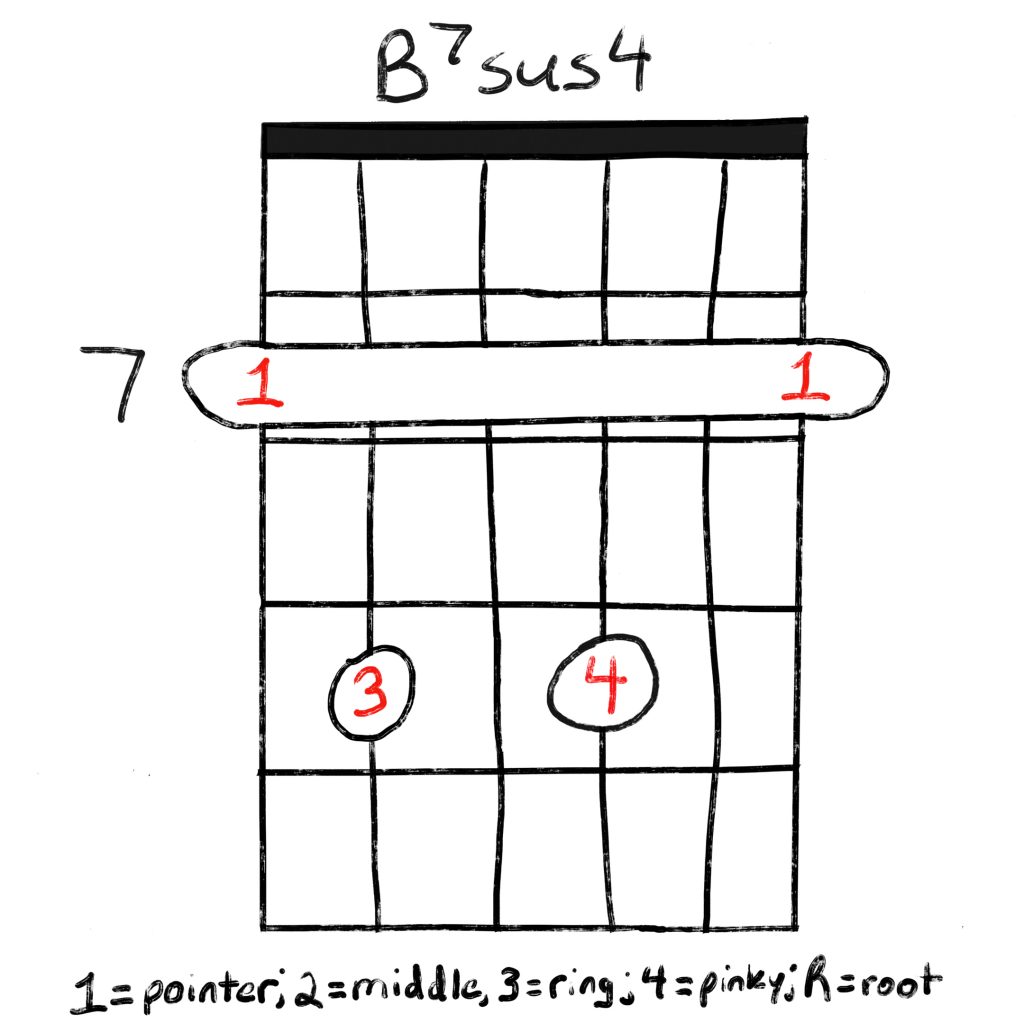
To play a B7sus4:
- index finger (1) barres across all six strings at the 7th fret
- ring finger (3) fretting the F# note on the A string at the 9th fret
- pinky finger (4) on the E note on the B string at the 9th fret
This last version is the same as an A shape moved up 2 frets to the 4th fret. To make an 11th chord, you just ad an 11th note to the triad formula.
To find an 11th note you count the standard 7 notes of the scale and start back at I as VIII. So the 11th note is a IV one octave higher.
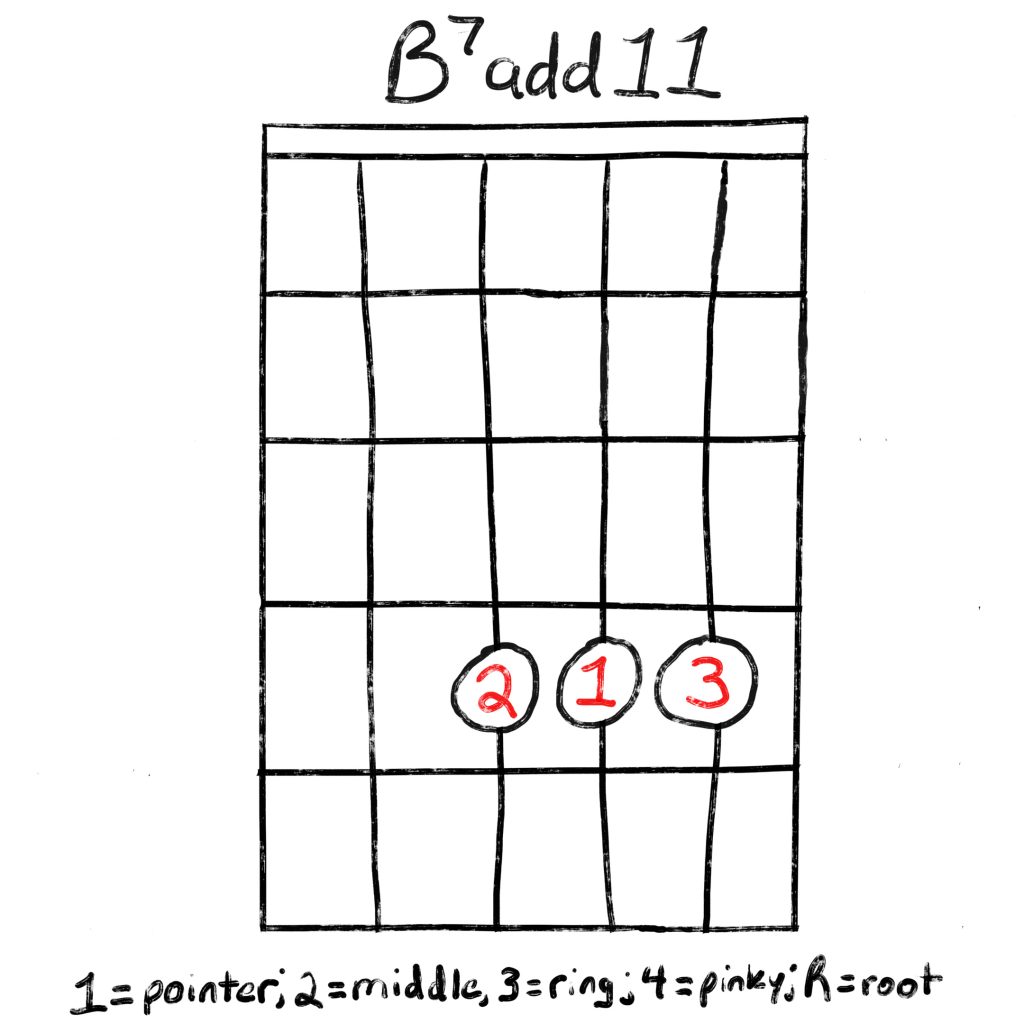
To play this last version is with your:
- middle finger (2) fretting the F# note on the D string at the 4th fret
- index finger (1) fretting the B note on the G string of the 4th fret
- ring finger (3) fretting the D# note on the B string on the 4th fret
- mute the low E string and play the A and high e open
Songs That Have The B7 Chord
Here are some popular songs across multiple genres that have a B7 chord in them:
- Bad Guy by Billie Eilish
- Eyes On You by Camila Cabello
- Folsom Prison Blues by Johnny Cash
- Happy Together by The Turtles
- Hotel California by The Eagles
- People Are Strange by The Doors
- Where Did You Sleep Last Night by Nirvana
Final Word
The B7 guitar chord is such a fun and interesting chord to play. Armed with the knowledge to build your own chords and chord progressions you can start putting your chord library to use.
Try adding the B7 guitar chord to your next song!

Leave a Reply